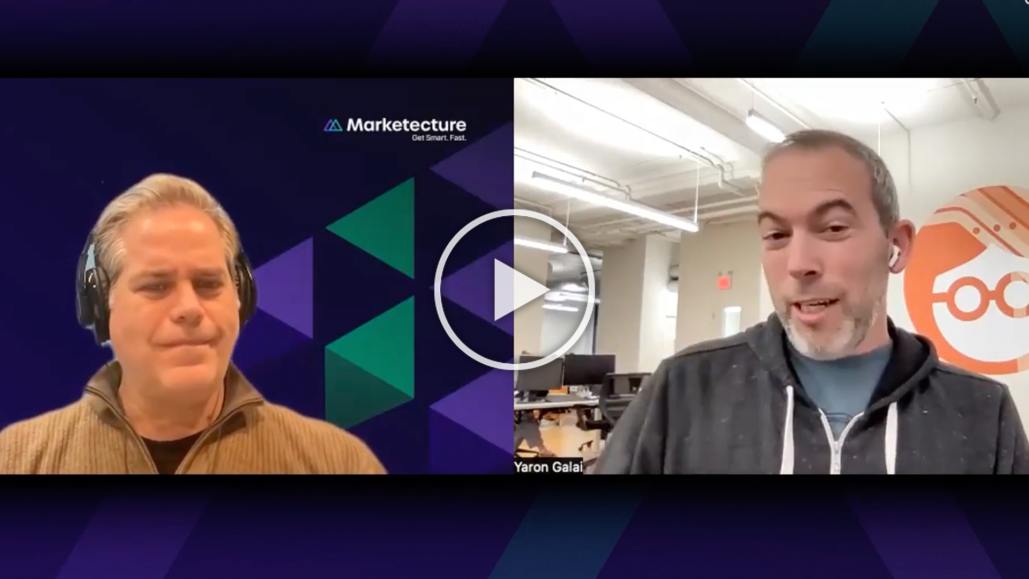New technologies are enriching publishers’ content recommendation capabilities

Produced in partnership with Marketecture
The following article highlights an interview between Yaron Galai, co-founder and co-CEO of Outbrain, and Ari Paparo, founder and CEO of Marketecture. Register for free to watch more of the discussion and learn about new available technologies publishers can leverage to optimize their content recommendations.
While it’s now popular for publishers of all sorts to utilize content recommendations to do more than recommend content for their readers, such as to engage readers and as a source of revenue for the publisher, it was pioneered by Outbrain 15 years ago and continues to evolve.
Outbrain’s co-founder and co-CEO recently spoke with Ari Paparo, founder and CEO of Marketecture; they discussed the new features Outbrain has debuted and the capabilities at the company’s core.
How Outbrain enables publishers to optimize their content recommendations
To help keep the content recommendation model future-proof for publishers, third-party cookies are the least valuable data signal within Outbrain’s operating model. Because Outbrain’s system is installed code-on-page, wherever the publisher chooses — web, mobile, apps, etc., it can pull in a large amount of first-party data.
Because contextual data helps advertisers understand what a page is about and Outbrain’s feed can be installed on every page, the feed — and therefore the publishers — able to determine the contextual signals a user has seen over time.
The feed is mixed based on each publisher’s preferences and blended with the publisher’s content — organic recommendations — and outbound advertising. This setup allows Outbrain to gather a significant amount of first-party data that can then be used to optimize the recommendations for that publisher’s feed.
About half of the clicks or traffic generated come from organic recommendations, and the other half from outbound advertising. All clicks generated result in valuable first-party data because the most unambiguous indication of user interest is when they click and engage with something.
“Our primary model is cost-per-click,” said Galai. “We think this is very important because the focus or secret sauce of a company’s engagement is user engagement. Many publishers’ business models today don’t reflect that like CPC does.”
Connecting content recommendation feeds to business objectives
Outbrain’s latest introduction to the market — Keystone — builds on years of experience when it comes to understanding user engagement and advertiser objectives.
Keystone allows publishers to harness Outbrain’s personalization expertise and customize on-site experiences for each user while applying it to their business growth goals.
For example, many publishers today have a feed of cards, especially when thinking of the mobile setup. Instead of having multiple departments manually manage those cards, Keystone enables a unified experience. The publisher team can choose the cards to be managed and establish the objective for those cards to hit, such as driving subscriptions. To help meet this goal, it’s essential to drive up the amount of organic content a user reads each month, which Keystone can do. For example, when the user hits the seventh story, it can show them a “subscribe now” card.
In addition to building a robust content recommendation system, Outbrain’s deep roots in contextual targeting and native advertising make it a company intent on making life easier for publishers — unlike many other competitors in the space.
————————————————
Register for free to watch more of the discussion between Ari Paparo and Yaron Galai and learn about new available technologies publishers can leverage to optimize their content recommendations.
More from Digiday

Google’s antitrust trial spotlights search ads on the final day of closing arguments
Ads took center stage today in Google’s antitrust trial, as the U.S. Dept. of Justice sought to show the search giant as the only player in a game with rising prices.

How CTV and DOOH are growing this political season for smaller agencies
Connected TV and digital out-of-home are playing a bigger role in upcoming elections and politics – especially for smaller agencies looking to place clients’ dollars.

CVS Media Exchange bets on solving the measurement gap to stand out in the retail media landscape
Measurement and attribution are common pain points for advertisers looking to track campaign performance in retail media. They’re pain points that CVS Media Exchange, CVS’s retail media arm, which is also known as CMX, is aiming to solve to help it stand out in an increasingly crowded landscape.








